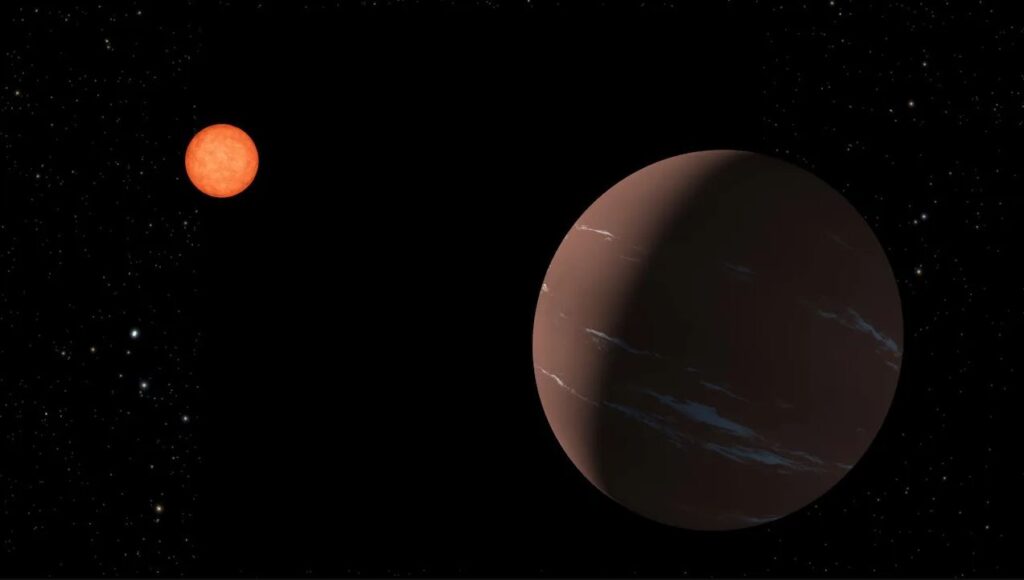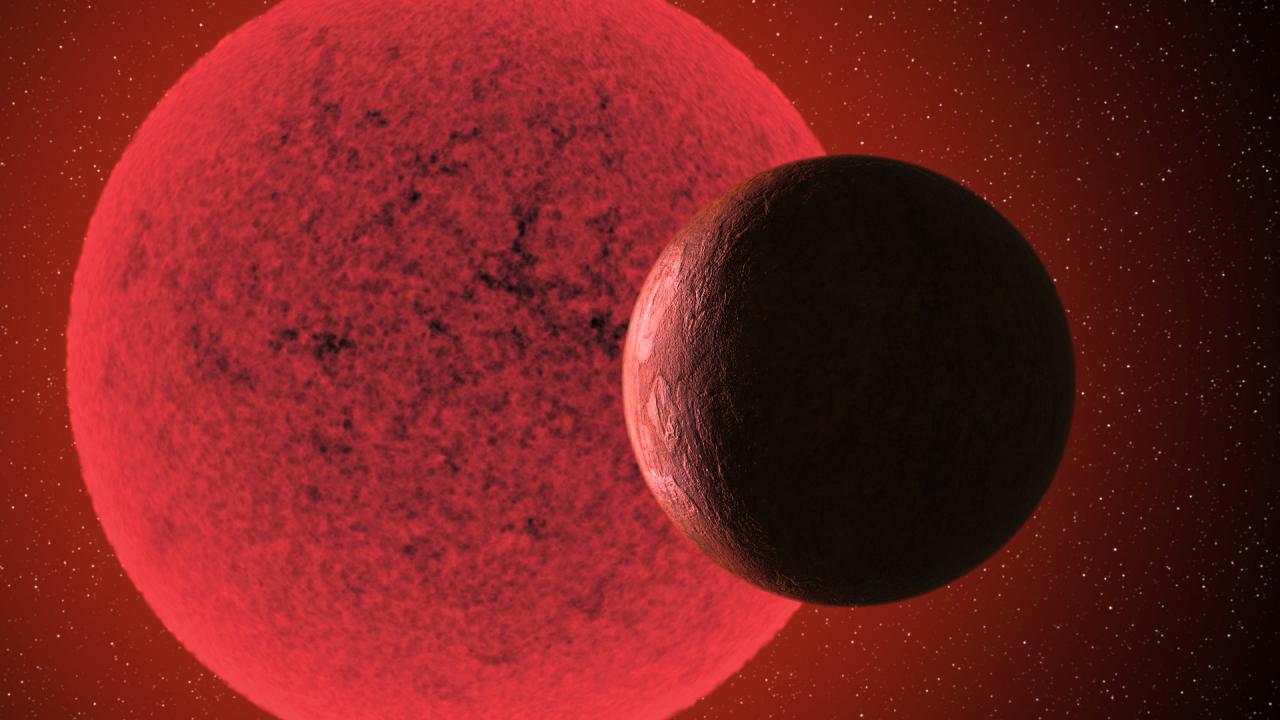A super-Earth-type planet has been discovered that may have an environment favorable to life
About 173 light-years away, astronomers have discovered a super-Earth- type planet around an M-type red dwarf star .
The planet was named TOI-715b; It has a radius about 1.55 times that of Earth and orbits its star in the habitable zone. There is another candidate planet in the system. It is the size of Earth and, if confirmed, would be the smallest planet in the habitable zone among those discovered by the TESS telescope .
TOI-715 is a medium red dwarf star. It has about one-fourth the mass and radius of our Sun. The planet TOI-715b is located close to the star and takes just 19 days to make one complete revolution. Due to the fact that red dwarfs are much fainter stars than the Sun , the newly discovered super-Earth still falls within the conservative habitable zone.
The habitable zone is a rather crude way of identifying planets that might have liquid water. Its boundaries are uncertain and even controversial, because whether or not a planet will have liquid water also depends on the spectral type of the star, the planet's albedo, mass, and cloudiness of the atmosphere.

It is more useful. year The idea of the Conservative Living Zone (CHZ), which emerged in one of the studies conducted in 2014. This is the region around the star where the rocky planets receive 0.42 - 0.842 of the radiation received by Earth from the Sun. Any rocky planet receiving this much energy would be in the conservative habitable zone, regardless of its distance from the star.
The discovery of a super-Earth- type planet in a star's conservative habitable zone is always exciting because it fuels our interest in the existence of life on other planets . For this reason, they are more intriguing planets than, for example, E. year Hot Jupiters that have zero chance of liquid water or life. Even the hardiest extremophile cannot survive in the harsh environment of hot Jupiters.
The new discovery is so exciting for several other reasons.
"As it turned out, the James Webb Space Telescope has ushered in an era of detailed characterization of the atmosphere," wrote a team of researchers led by Georgina Dransfield, a researcher at the University of Birmingham's School of Physics and Astronomy.
Now that thousands of exoplanets have been discovered, astronomers are seeing some trends in the population. One thing they noticed is the lack or absence of small planets, those with a radius of 1.5 to 2 Earths . This is called the Minor Planet Radius Rift or Sub-Neptunian Radius Rift (aka Fulton Rift). TOI-715b's radius is 1.5 Earth radii, and it fits right into this gap.
It is extremely unlikely that planets simply did not exist in this radius gap. Planets must have started out larger and then lost mass to fall into this gap. Therefore, this gap tells us something about the loss of mass by the planets.
According to astronomers, the planets that fall into this rift are initially large, but as a result of photoevaporation, the star loses mass and shrinks in size. This is why it is sometimes called the photoevaporation field. There's a lot of uncertainty about this, and that's why astronomers want to better study the planets that fall into this category.
It is not known whether this radius gap also exists around M-type red dwarfs . It is possible that these stars have a density gap, not a radius gap.
Whether it's a radius rift or a density rift, TOI-715b should definitely tell us something about exoplanets, photoevaporation, and the distribution of exoplanets around red dwarfs. However, all this requires additional, detailed observations.
Ever since we started discovering exoplanets, scientists have been waiting for the day when the James Venn Space Telescope was launched.
James Webb can observe the spectrum of an exoplanet's atmosphere and determine its composition. However, some targets are much better at this than others.
TOI-715b is a prime target due to its proximity to the star . Due to the fact that TOI-715 is a small red dwarf and the planet orbits it once every 19 days, the transit of the exoplanet in front of the star is deeper and more frequent. As a result, James Webb will not need much time to observe his atmosphere, which will save him a lot of time.
Could this super-Earth be conducive to life? Until James Webb gets involved, it's hard to say anything. It is in the conservative life zone and there are some reliable signs.
TOI-715 is a slightly older star than our Sun , about 6.6 billion years old. It has a low level of magnetic activity. This is probably why there is a lack of eruptions in the TESS data compared to other young M-dwarfs. Red dwarfs are characterized by extremely powerful eruptions that can sterilize planets. Such eruptions can also empty the planet's atmosphere, which can be the e.g. of exoplanets. year The cause of the photoevaporation field.
There may be another planet orbiting TOI-715. It is currently only a candidate and has been named TIC 271971130.02, but if confirmed, it would be the smallest rocky exoplanet in the habitable zone among those discovered by TESS.
The TOI-715 system is an excellent target for further research. TOI-715b is currently waiting its turn on James Webb's list to study its atmosphere. It is he who can detect signs of an environment favorable to life in its atmosphere .
The study was published in the Monthly Notices of the Royal Astronomical Society .
Prepared according to Universe Today.





